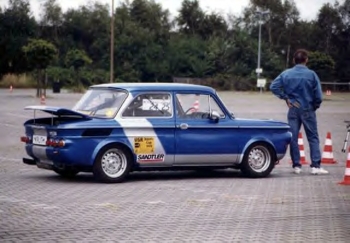
NSU's Corvair Look-Alike.
This is one of the many articles published in the monthly NJACE Fanbelt
newsletter.
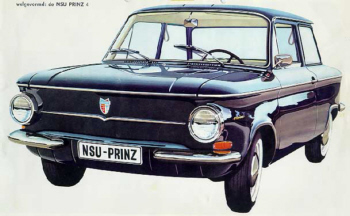
From 1961 to 1972, NSU, a German auto-maker, produced compact cars that
looked just like early-series Corvairs, right down to the flying wedge roof!
And they were mechanically similar too, with rear-mounted air-cooled
engines.
Although NSUs are virtually unknown here in the USA, they were quite popular
in Europe. Sales of these mighty little cars totaled more than one million
units. And they still have quite a following as evidenced by dozens of
web-sites devoted to the marque. The 'Net is plastered with photos of NSUs
in full race trim, burning up the tracks of central Europe to this very day.
Clearly, NSUs are fun cars.
Rear engine NSUs came in two basic flavors: a two-cylinder version and a
four-cylinder version.
The two-cylinder version was known as the Prinz IV and was introduced in
1961. They remained in production right up to 1969, long after most other
micro-cars bit the dust. By the way, the Roman numeral indicates the model
series, not the number of cylinders. Thus, the Prinz IV is the two-cylinder
variant.
Four-cylinder NSUs shared the same basic Corvair-style body shell with the
Prinz IV, but the four-cylinder model was stretched a foot. It took NSU a
couple more years to tool up for the larger four-cylinder jobs, but they
remained in production three years longer.
The first four-cylinder model, known as the NSU 1000, was introduced at the
Frankfurt auto show in September 1963. Later offspring included the 1000,
1000 TT, 1000 TTS, 1200C and 1200/110. The last four-cylinder NSU came off
the production line in 1972.
Technically, the four-cylinder NSUs are more interesting than the twos. They
are true rear-engine cars, with power units mounted aft of the rear axle.
The engine was an in-line four, with cylinders sandwiched between a rigid
aluminum crankcase and an alloy cylinder head. Displacement ranged from 996
cc's to 1,200 cc's.
By choosing an in-line layout instead of a boxer or a "V", NSU could make do
with one head, one carburetor, one intake manifold and one exhaust manifold.
And for a further savings in manufacturing costs, the finned cast iron
cylinder jugs were cast in pairs.
But aside from these basic concessions to economy, no reasonable expense was
spared. Like Honda's early automotive ventures, NSU drew upon its extensive
motorcycle racing experience when it designed this engine. The crankshaft
rode in five main bearings, not the usual three or four. And the cross-flow
cylinder head had hemispherical combustion chambers, the valves being
actuated by an overhead camshaft with rocker arms.
There was no need for pushrod tubes with this design, for there were no
pushrods. And there was no need for a fan belt. The cooling blower was an
integral part of the flywheel.
Rather than mount this power plant in the normal longitudinal position, NSU
broke tradition and mounted the engine transversely. This eliminated rear
overhang and minimized rear weight bias. The improvement was measurable. The
NSU 1200, for example, had a weight distribution of 45/55, front to rear,
which is quite good for a rear engine car.
And, by positioning the transmission alongside the engine, access to the
clutch unit was made easy. According to NSU aficionados on the 'Net, the
clutch in any four-cylinder model can be replaced without removal of the
power train unit in a mere 35 minutes.
It seems that every manufacturer of rear-engine cars is inspired to
introduce a special high-performance version, and NSU was no exception. In
1965, NSU introduced the special TT model, which was based on the 1000 body.
The European version of the TT was equipped with disc front brakes, a
tachometer, and an 1100 cc engine motor with 9.0-1 pistons, twin carbs and
an oil cooler. The little 1100 cc engine produced 65 horsepower. The US
version of the TT was similar, but was equipped with a single-carb 1200 cc
motor to meet federal emission regulations.
In 1967, NSU introduced the even-hotter TTS. Available options included dual
throat Weber carbs, special camshafts, hot exhaust systems, forged pistons,
Boge shocks, etc.
NSU's Corvair look-alikes were small cars. The little Prinz was merely 135
inches long and weighed only 1,246 pounds. Even the stretched-out Model 1200
was only 158 inches long. It tipped the scales at 1,579 pounds.
And, they weren't muscle cars by American standards. With its high
performance equipment, a 1967 Model TT could reach 97 mph, but it needed
fourteen seconds to accelerate to 60. The other models were slower.
But when it comes to small cars, driving fun isn't necessarily correlated to
statistical performance. Back in the 1960s, lots of folks in Europe trotted
down to the local NSU dealer to buy a Prinz IV, Model 1000, or a TT. And, as
noted above, a number of people race them in European club events today. The
new Audi TT is named after - you guessed it - the NSU of the same name.
Speaking of dealers, here's some trivia for the rear-engine enthusiasts
living in New Jersey. NSU cars were imported to the United States by Valiant
Motors Import Co., Inc., 201-07 West Grand Street, Elizabeth, NJ 07202.
Maybe there are still a few boxes of sales brochures down the basement!
A number of web sites served as sources for much of the information in this
article, especially Marc DuBois' NSU Pages and
Gerhard Geiling's NSU Private
Homepage. You may also be interested in the German NSU Club webpage at
http://www.nsu-ig.de and the Der NSU Wankel Spider Club webpage at
http://www.wankel-spider.de

Corvair - The most innovative cars and trucks ever produced in America!
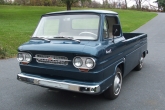
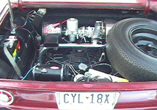
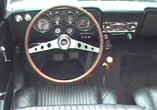
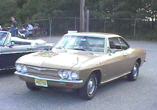
Click HERE to go back to the NJACE Home Page. Edited by redbat01@verizon.net on 10/23/2023
